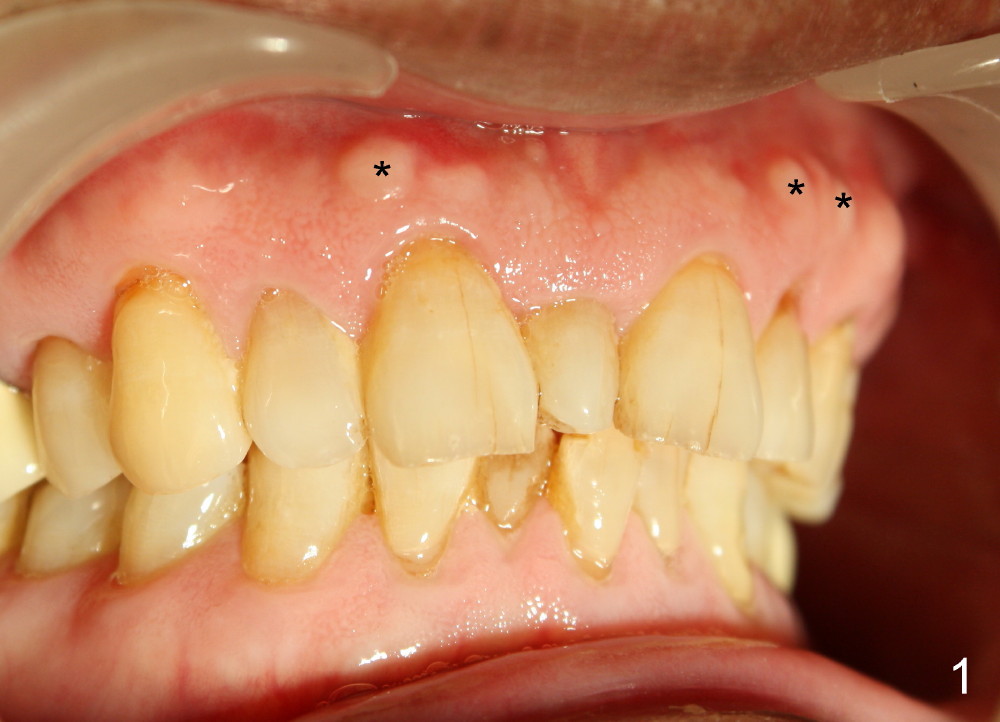
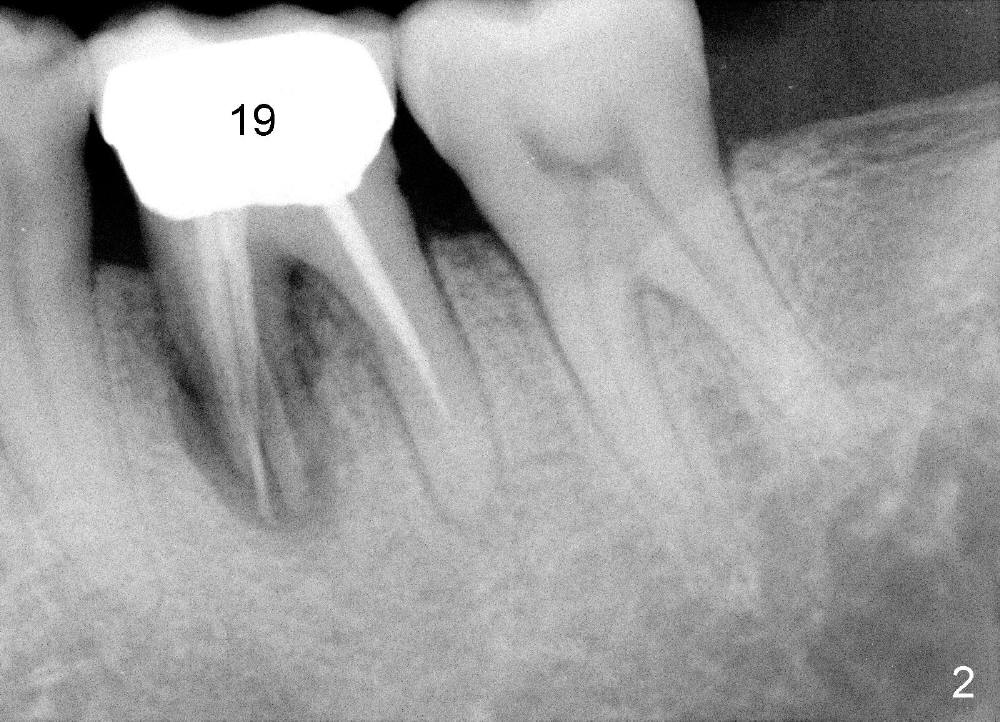
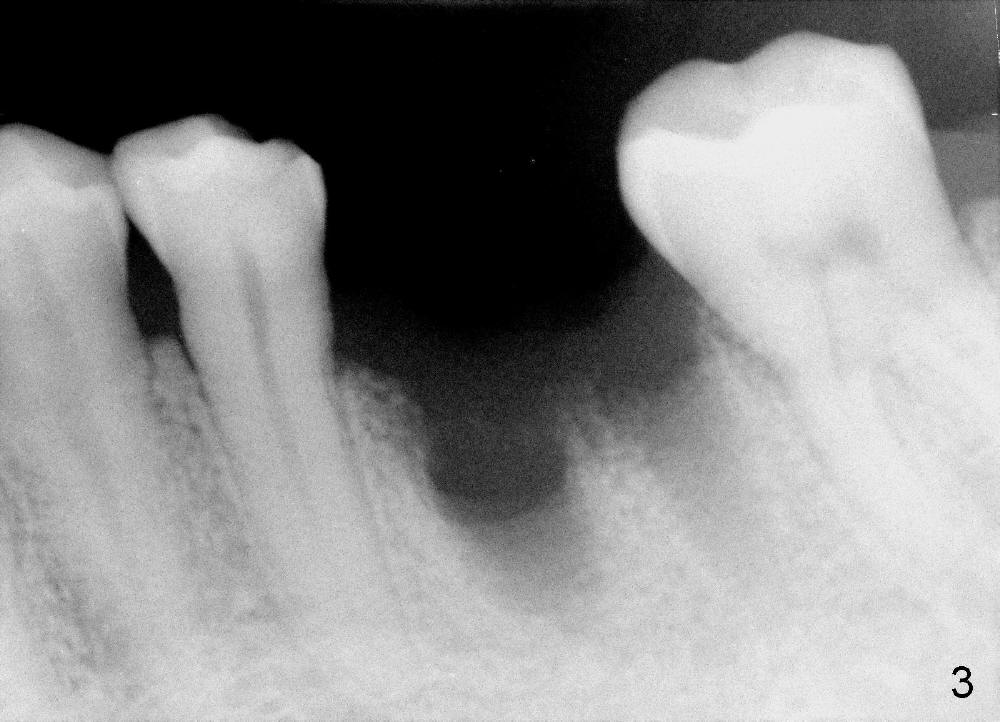
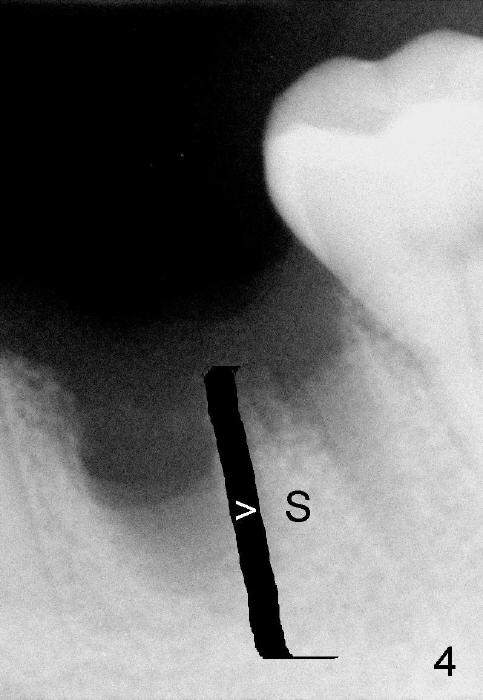
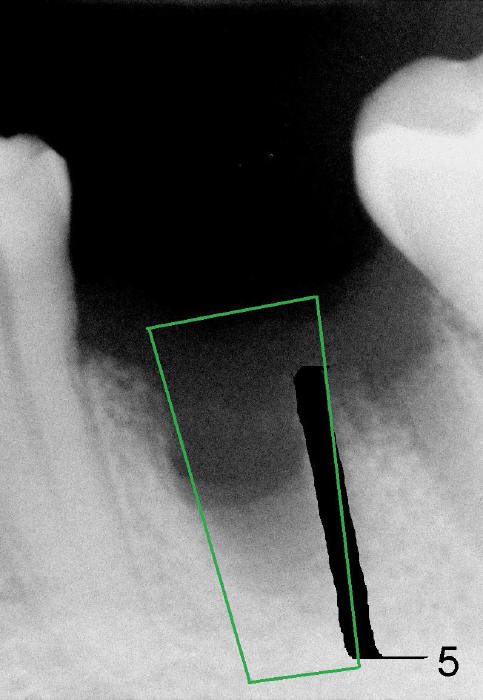
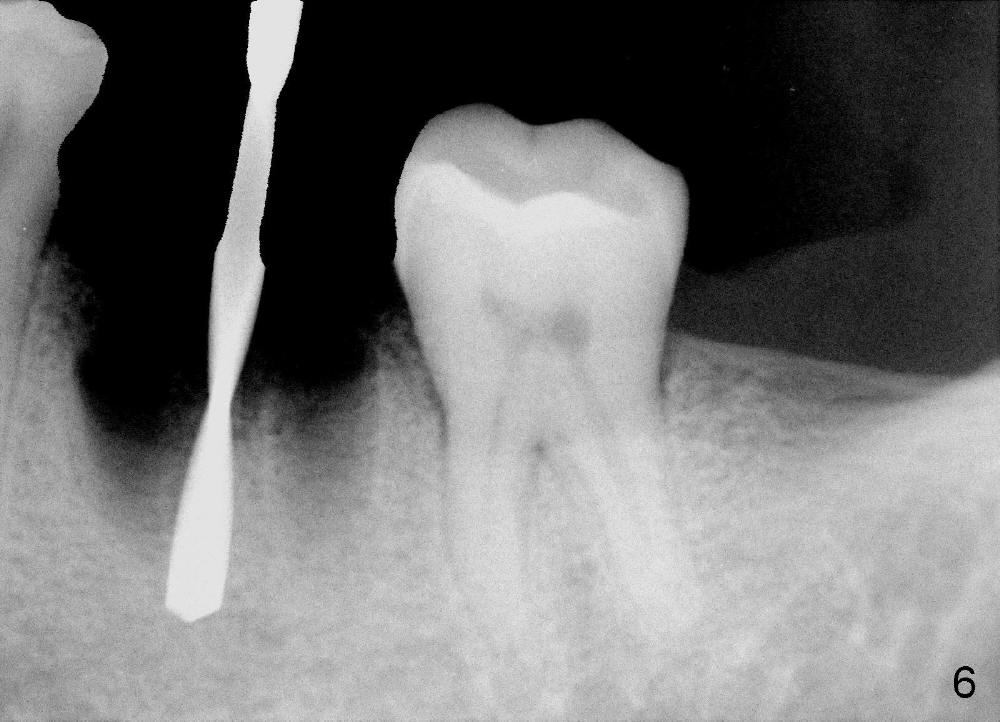
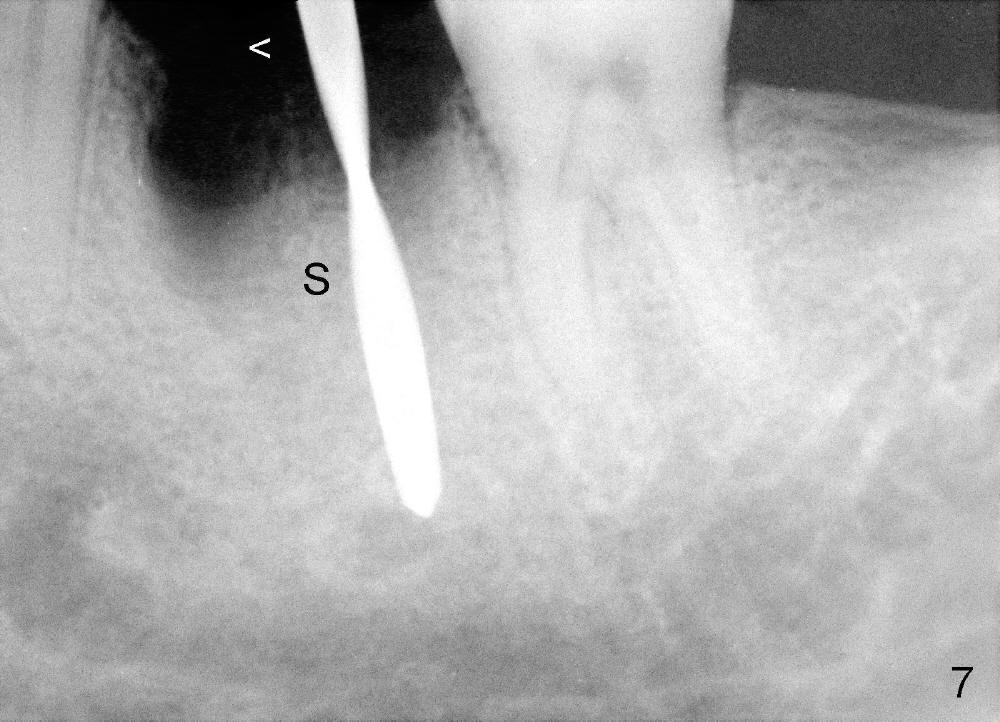
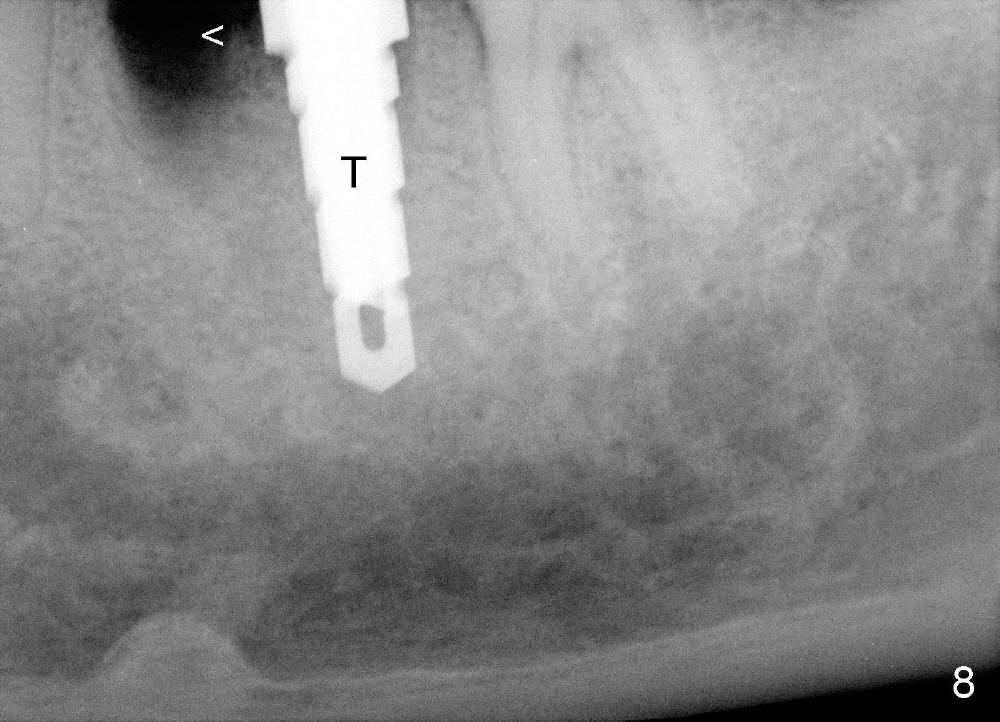
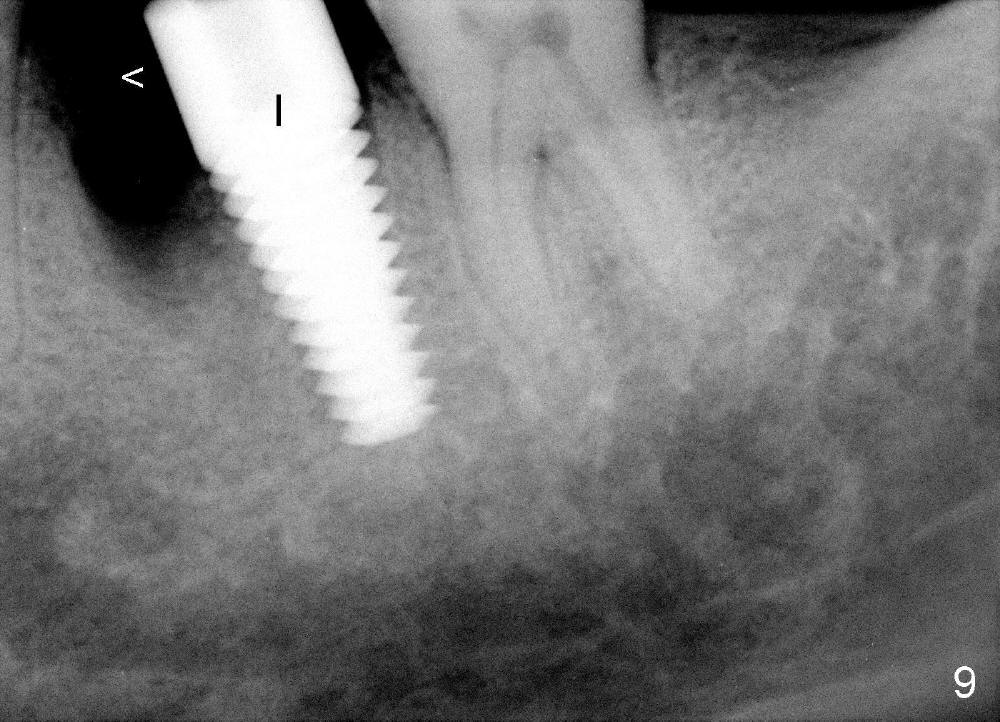
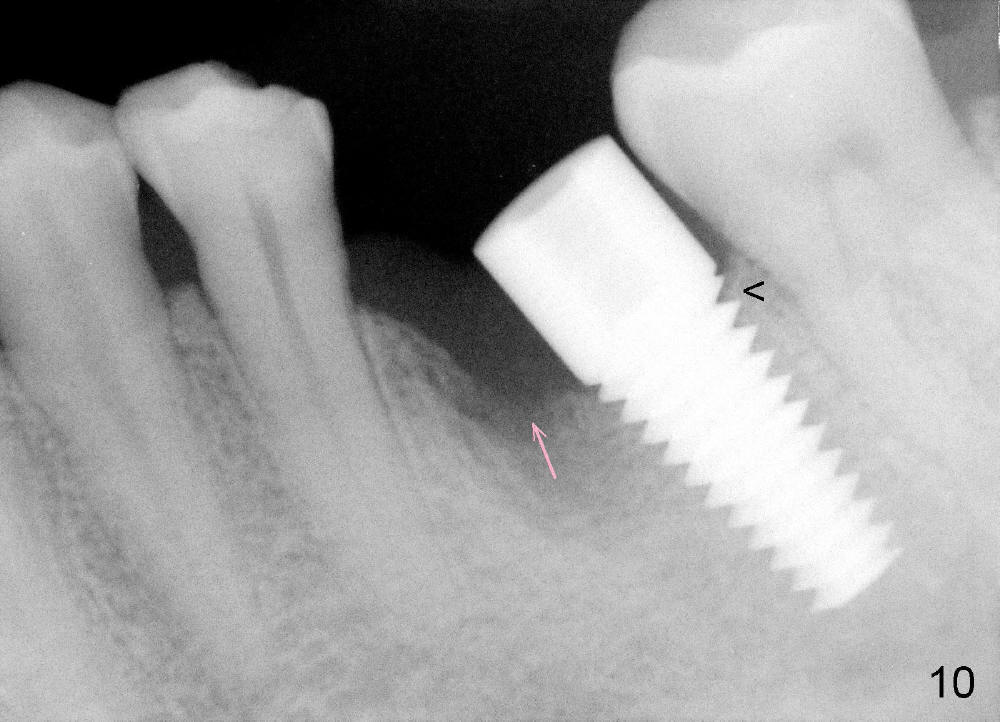
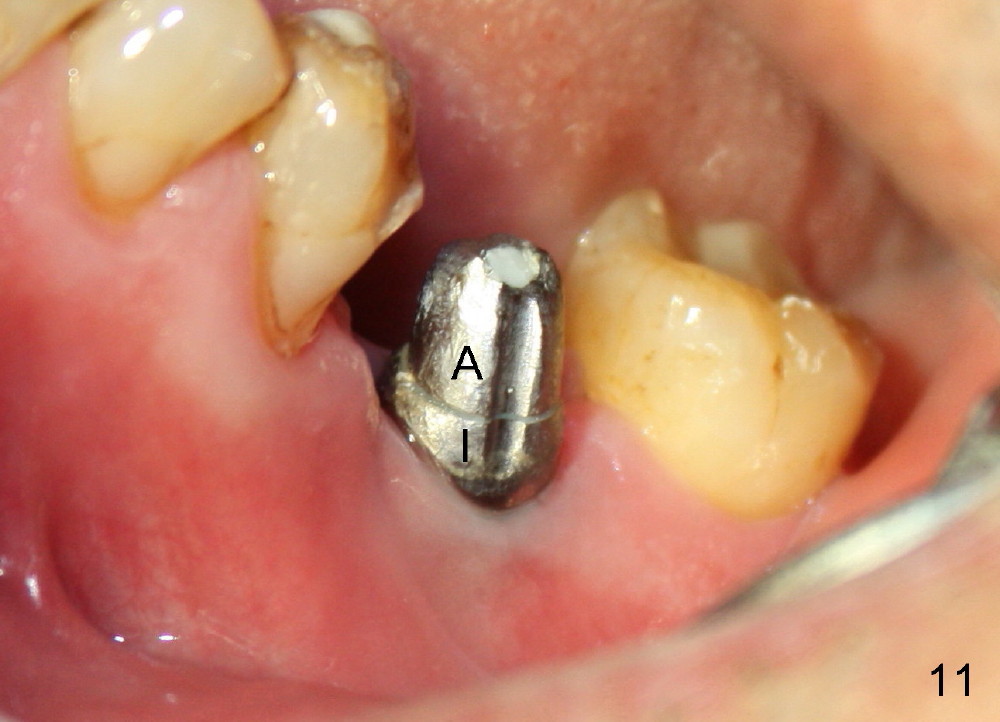
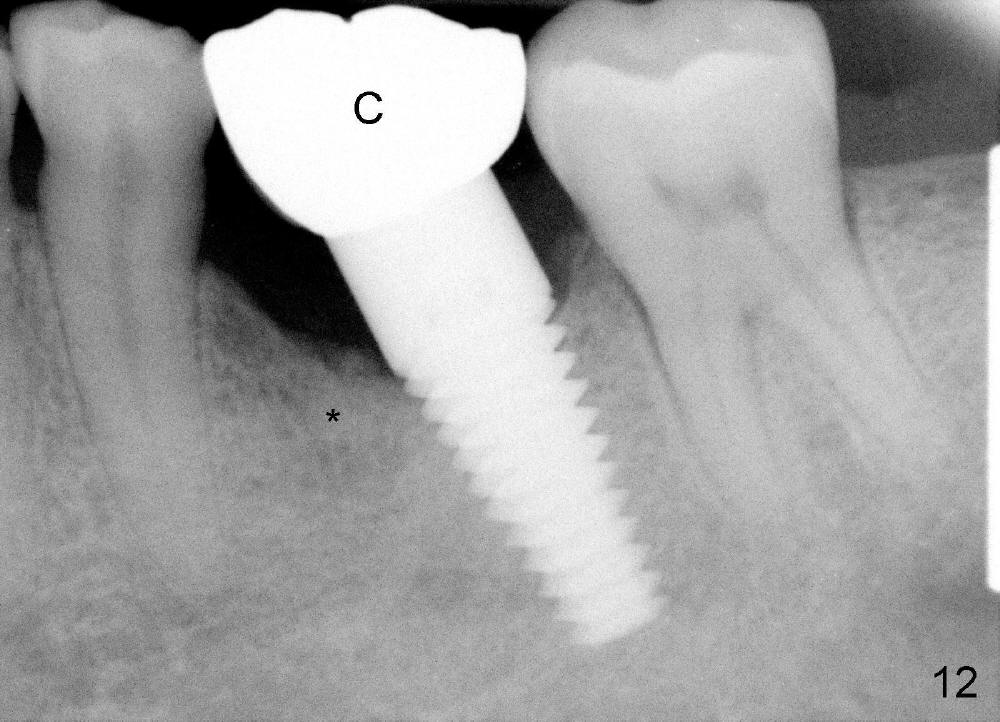
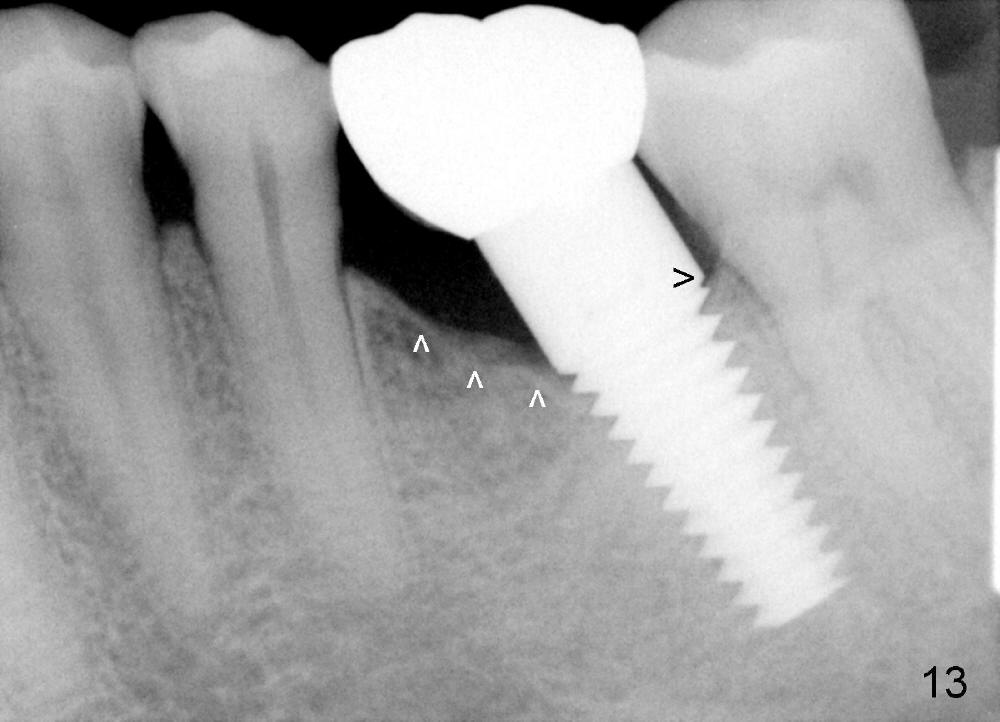
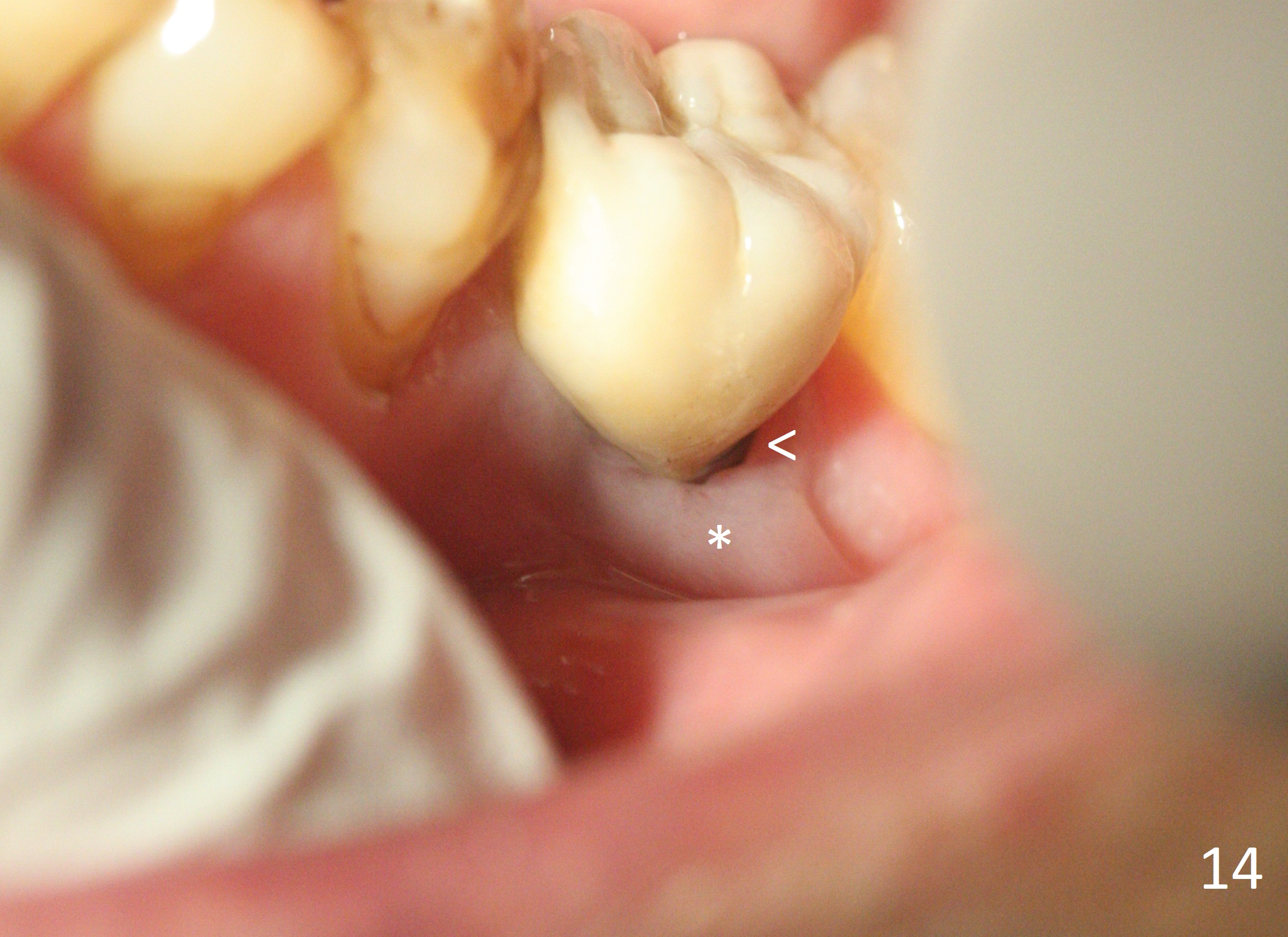
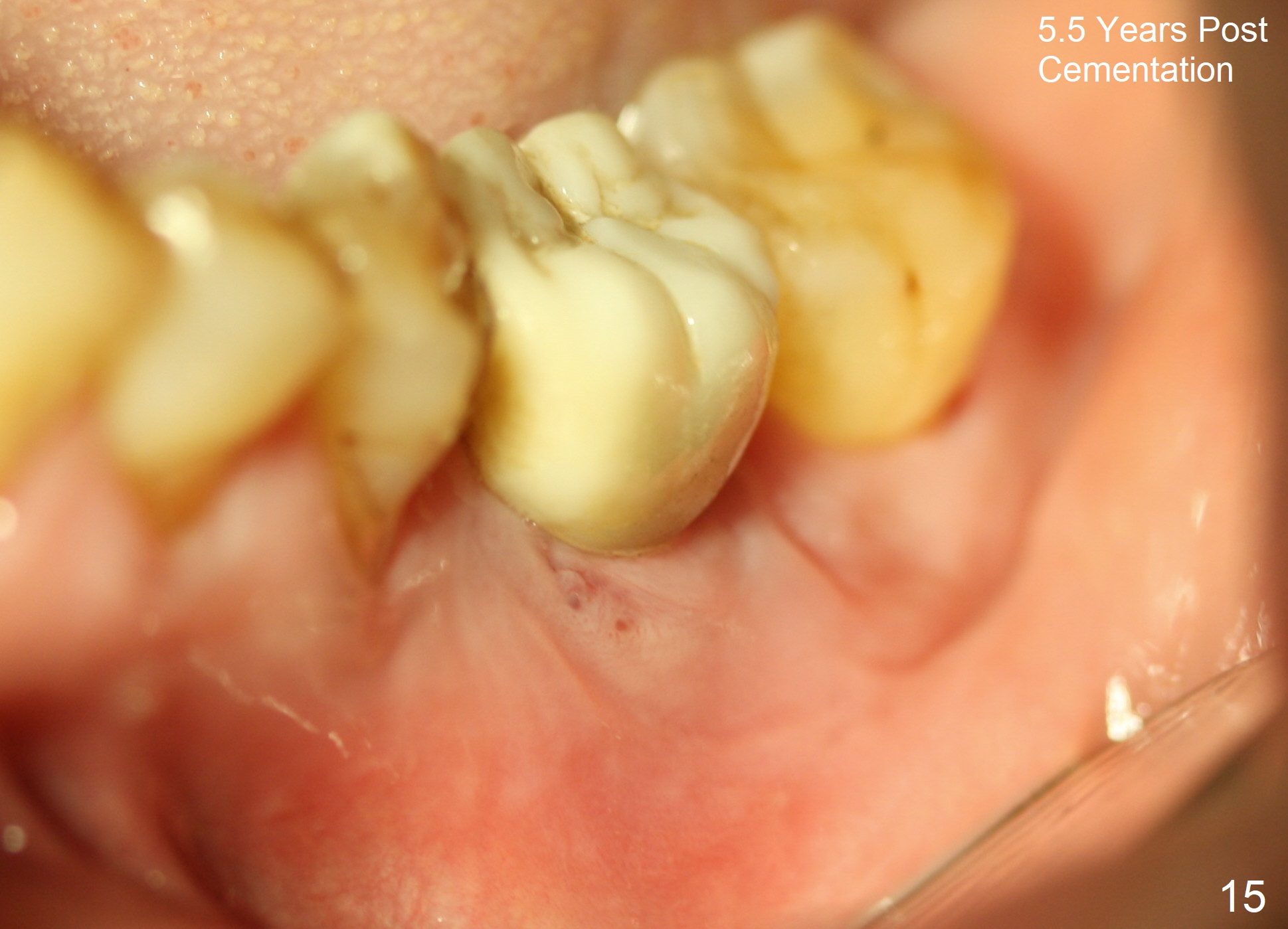
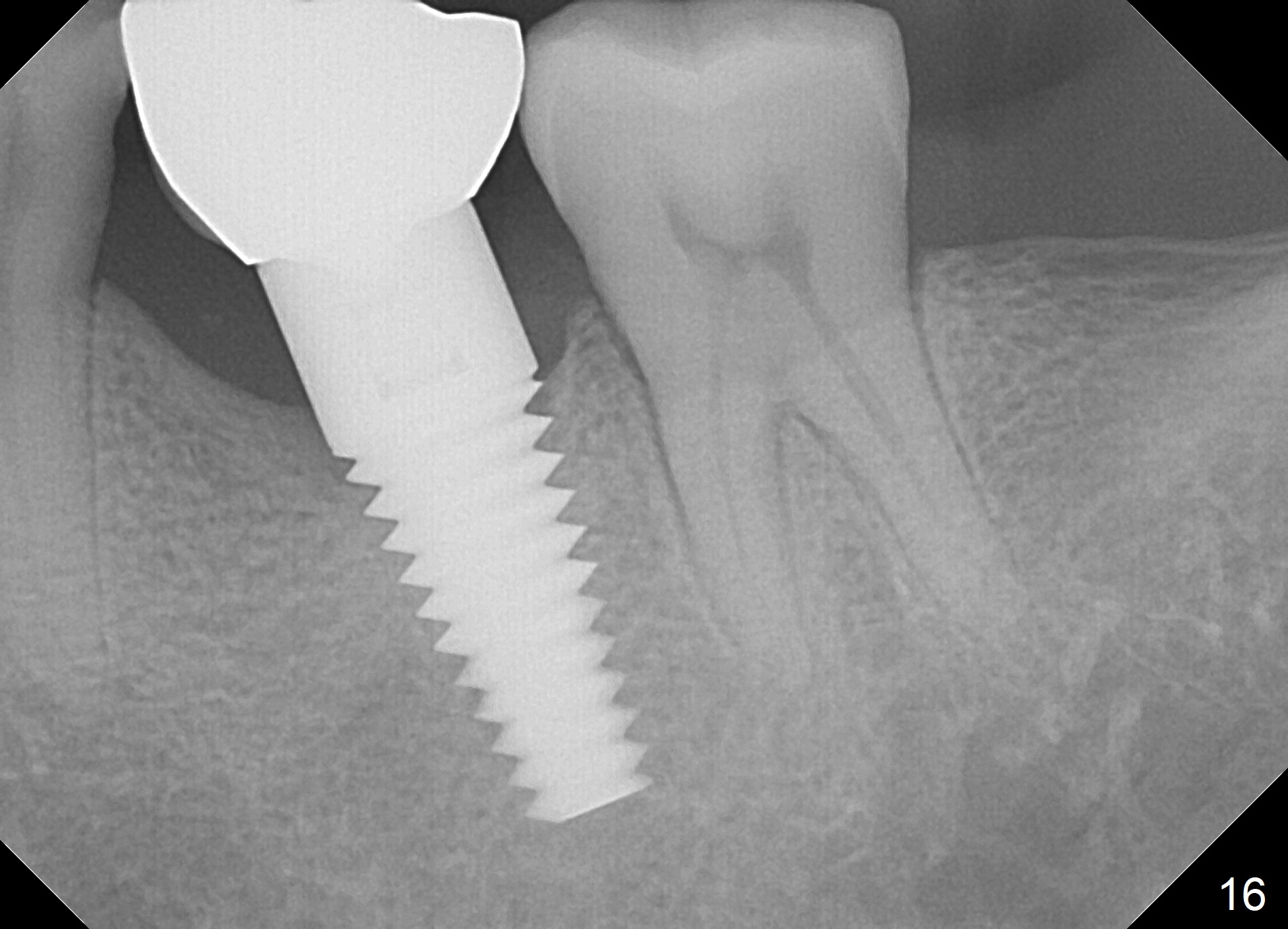
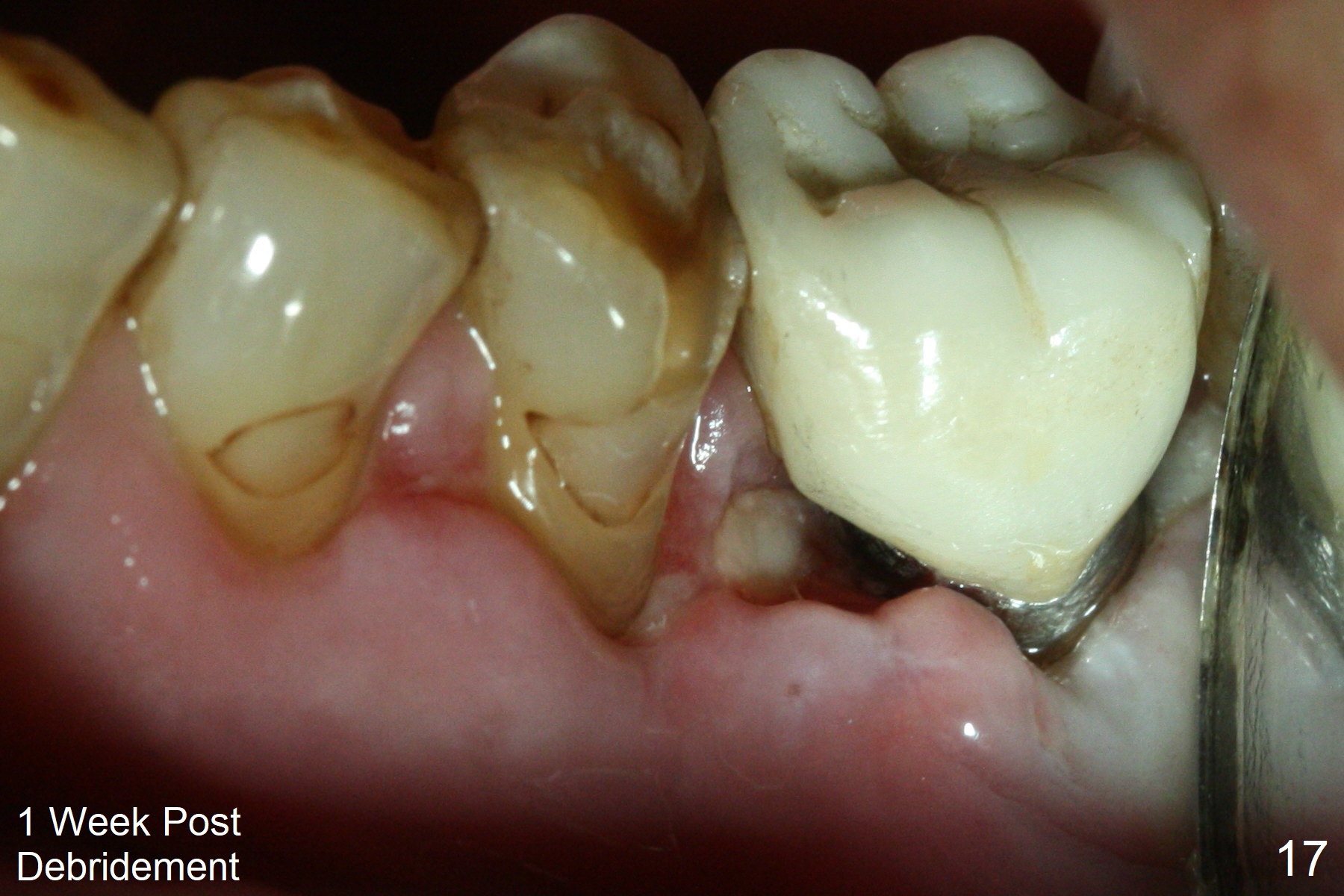
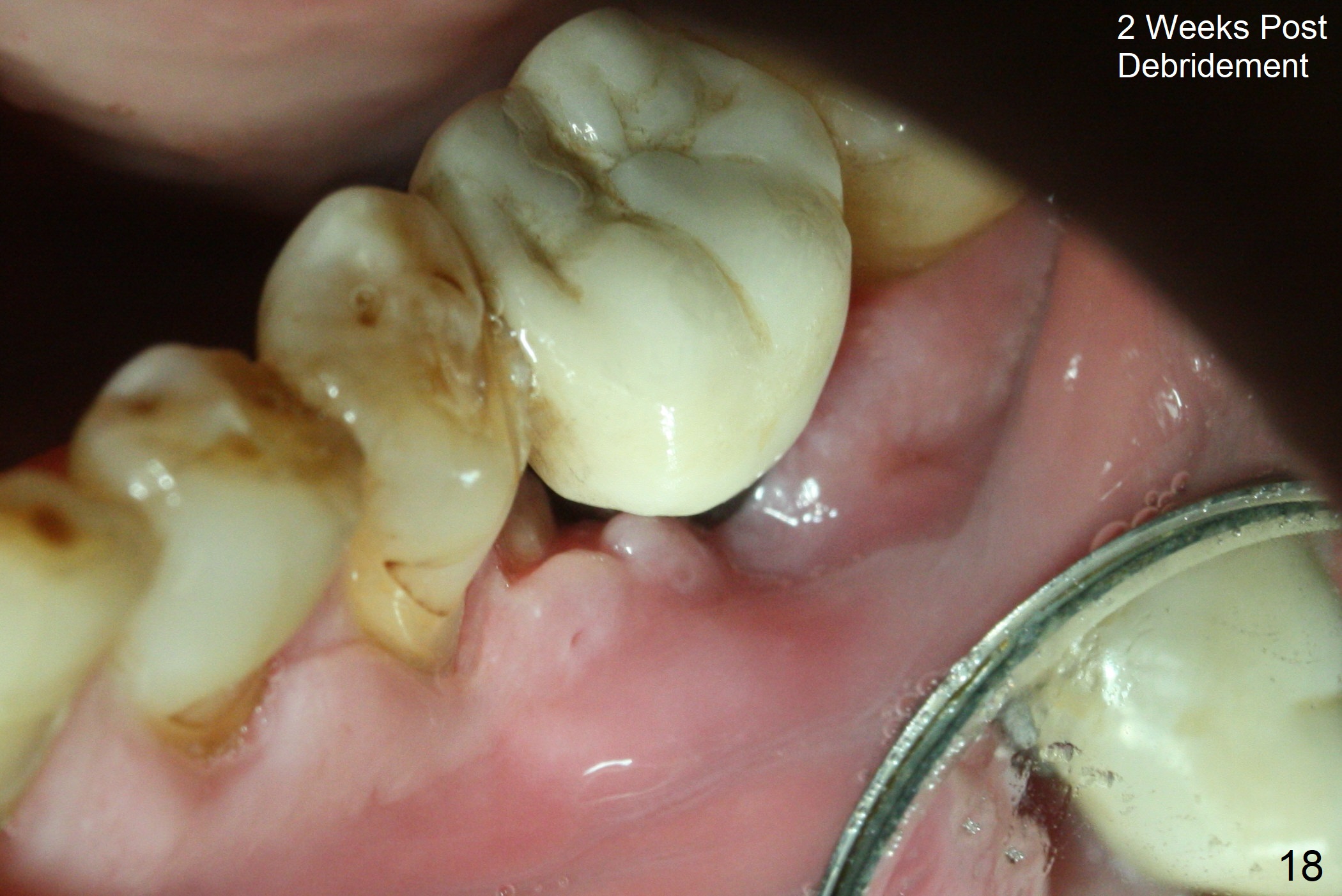
 |
 |
 |
 |
 |
 |
 |
 |
 |
|
 |
 |
 |
 |
|
 |
 |
 |
 |
|
 |
||||
Trajectory of Delayed Implant is not Easily Controlled
A 61-year-old man has signs of heavy mastication: exostosis (Fig.1 *) and root fracture of #19 (Fig.2). The tooth is extracted (Fig.3) and an implant is placed in a delayed fashion (6 weeks later, Fig.6-9 ), which is associated with poor trajectory (<). When the implant has osteointegrated 3 months postop (Fig.10), placement of a straight abutment (Fig.11 A) somewhat makes crown seating possible (Fig.12,13 (8 and 18 months post cementation, respectively)). Although there is bone growth around the implant after cementation (Fig.12,13), continuous follow up is necessary.
When a lower molar socket heals as early as 6 weeks, it is difficult to identify where the septum is. In contrast, immediate implant offers better visibility. In this case the mesial socket would be a better recipient site. With bone expansion, the septum (Fig.4 S) could be pushed distally (>) before placement of a larger implant with better trajectory (Fig.5 (green outline), as compared to Fig.9,10).
Localized buccal gingival swelling is noted (Fig.14 *) with a pocket distobuccal (<) 4 years 3 months post cementation. It appears that periimplantitis develops. Better oral hygiene is encouraged with use of water pik. Four days later, the patient reports that the pain reduces after enhanced local irrigation. If the infection does not resolve in a month, bone graft or removal of exposed threads will be performed with the aid of PRF. In fact bone graft should have been placed at the time of implantation. Periimplantitis recurs 5.5 years post cementation when he travels without water pik (Fig.15,16). Vanilla graft is placed over the buccal exposed threads after decortication without PRF (with Osteogen plug). The wound seems to have dehisced 1 week post debridement (Fig.17), although the patient is asymptomatic. The wound appears to be healing 2 weeks post debridement (Fig.18) in spite of mild tenderness apically. The patient will return in 4 weeks.
Return to Lower Molar Immediate Implant
Xin Wei, DDS, PhD, MS 1st edition 10/05/2014, last revision 06/17/2018